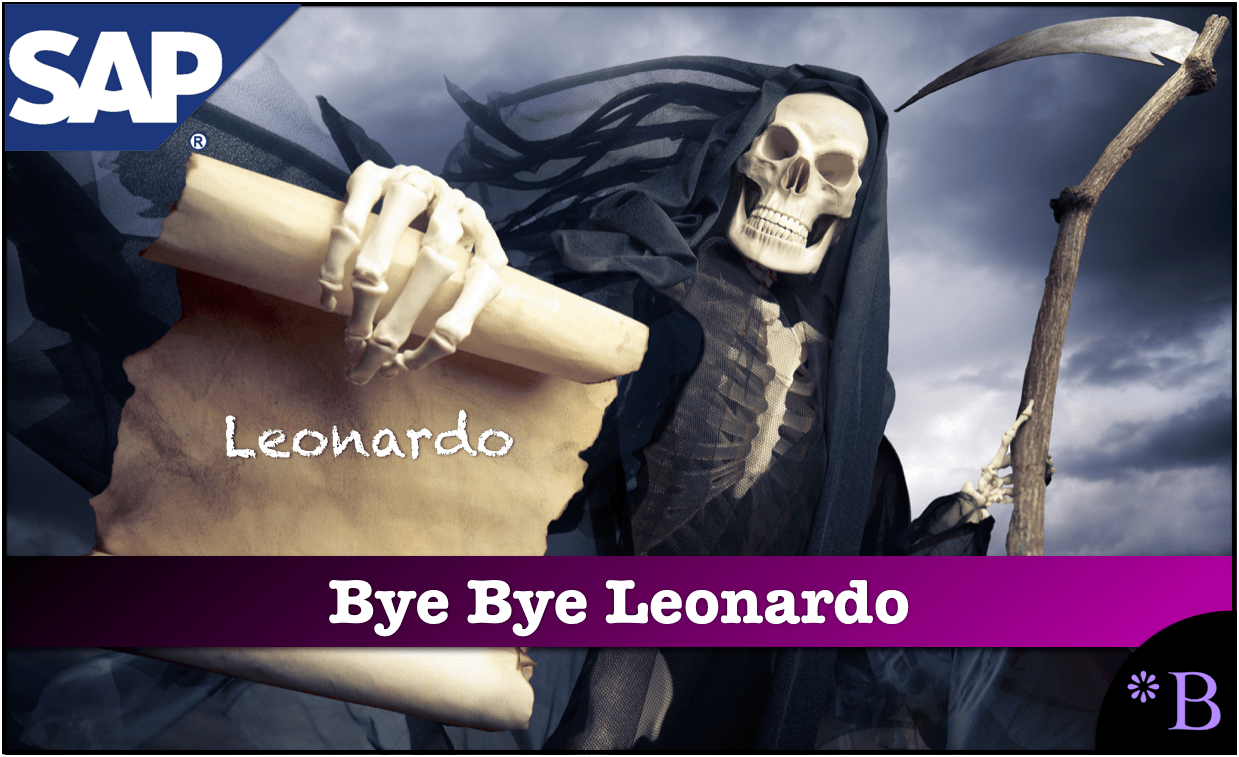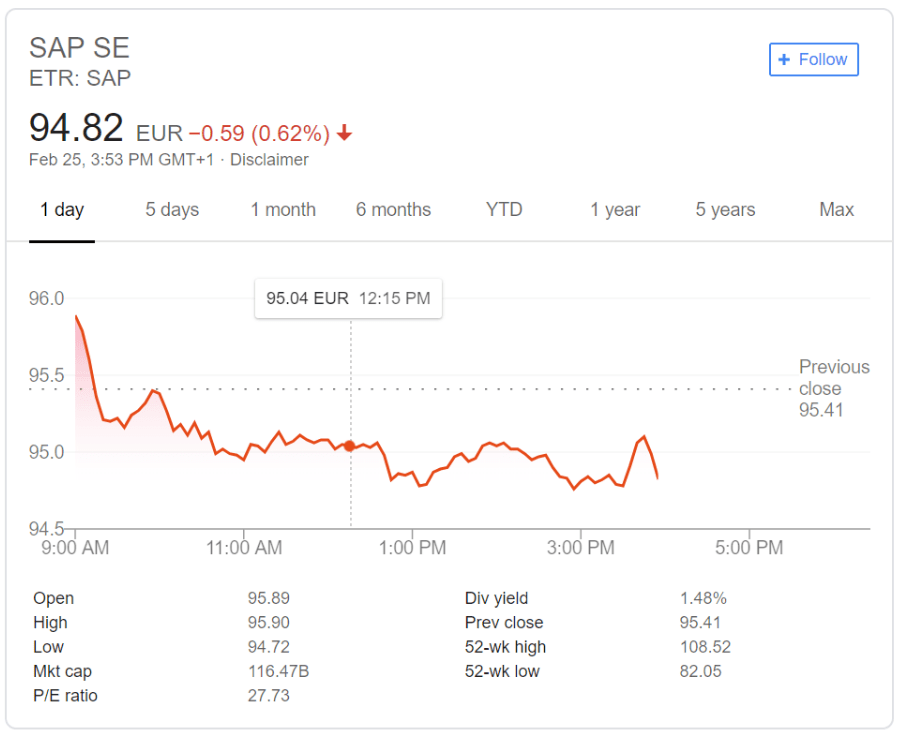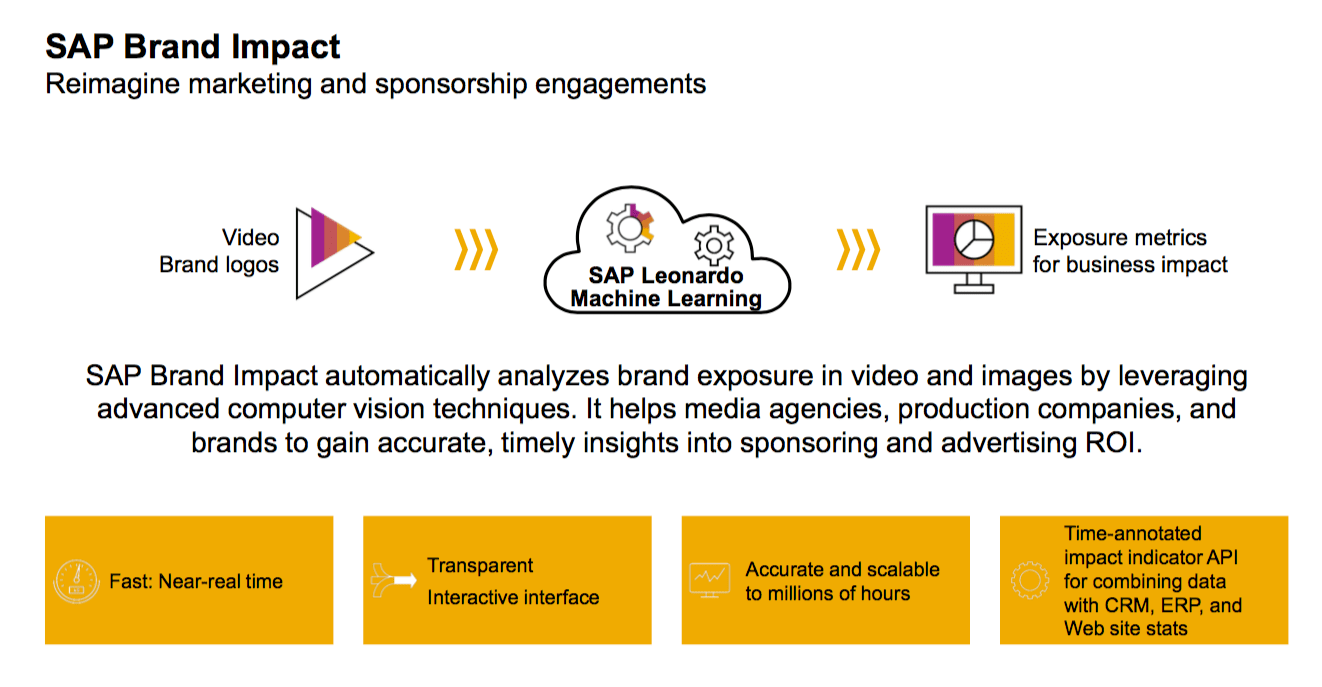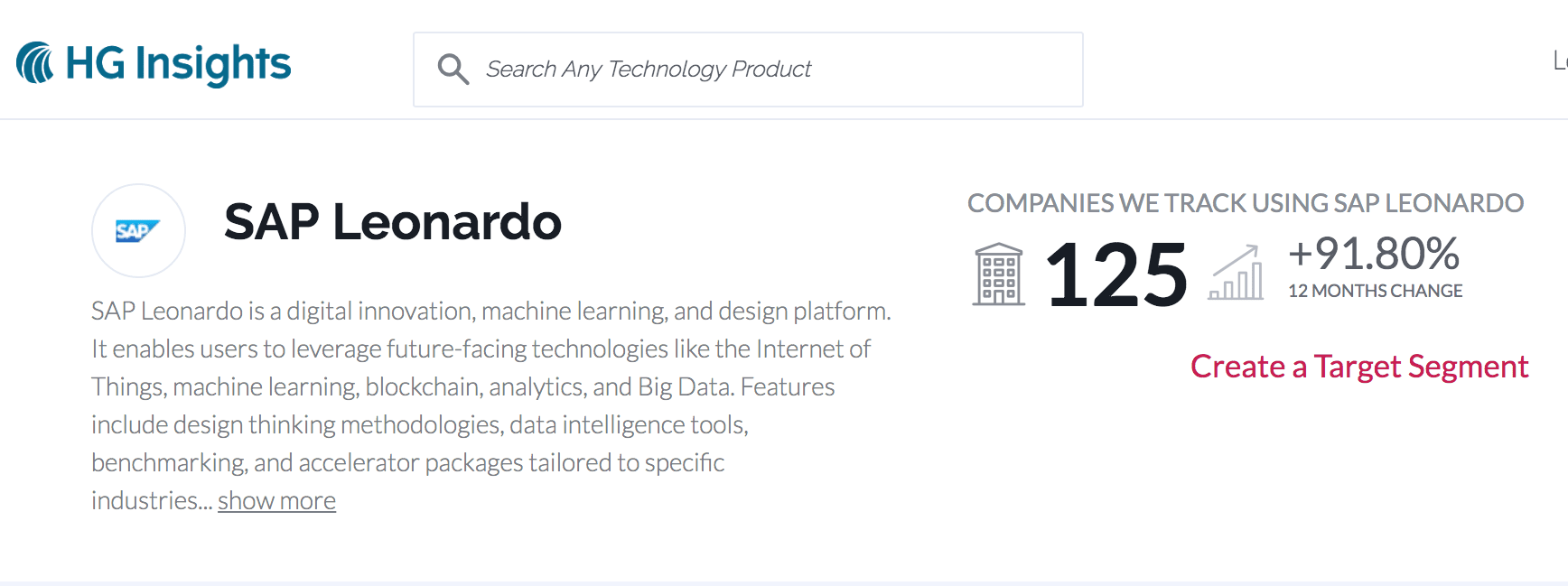Our 2019 Observation: SAP Leonardo is Now Dead
Executive Summary
- SAP made enormous claims around Leonardo. Several years after, these claims are so false.
- Find out the current state of Leonardo.

Introduction
SAP Leonardo was introduced with great fanfare and quickly metastasized its footprint from being strictly for IoT into being for AI and several other things. There is a lot of question as to what Leonardo ever was. However, this is less important now than in the past, as we have determined that Leonardo is dead. Leonardo never made much sense, and Leonardo is a broad issue at SAP regarding failures with new product introductions. You will learn why we call Leonardo a dead solution in February 2019.
Our References for This Article
If you want to see our references for this article and other related Brightwork articles, see this link.
Notice of Lack of Financial Bias: We have no financial ties to SAP or any other entity mentioned in this article.
October 2018: The Stock Drops 14%
Immediately after 3Q 2018 regulatory filing with the SEC, SAP stock dropped 13.83%. SAP SE (NYSE: SAP) declined 9.36% since February 2018 and is downtrending. It has underperformed the S&P 500 by 9.36%.

A year-long downtrend is too long to be seasonal.
In SAP’s case, analysts and investors see a problem with SAP’s product vision. Brinker Capital decreased its stake in SAP by 34.5%. SAP’s innovation centers around the “intelligent enterprise.” This innovation was expected to drive growth from S/4 HANA, Leonardo IOT AI, and the SAP cloud platform (SCP).
- Despite massive marketing spending, none of these product lines gained material market traction over the past two years.
- On the opening day of the SAP UK and Ireland user group conference in Birmingham in November 2017, a survey revealed that only 2% of SAP’s customers intend to use the much-trumpeted Leonardo artificial intelligence (AI) initiative, and 43% were unaware of its
- Leonardo kept changing its primary scope, starting as an IoT platform, then morphing into predictive analytics, and then AI.

Is Leonardo for IoT or for analyzing Videos with Machine Learning? Is it all just the same thing?
January 2019: 4,400 Employees Layoff
The announcement said SAP would replace 4,400 employees with people who have artificial intelligence and machine learning skills. In other words, SAP is going to hire thousands of data scientists. That is a lot of hiring for a product area where SAP has a negligible footprint. Companies double down when they see signs of demand growth, not the other way around.
February 2019: SAP Announces Departure of Bernd Leukert
According to his LinkedIn profile, Leukert heads strategic innovation initiatives at SAP. His role drives the development of new growth opportunities for SAP in the Internet of Things (IoT) and Industrie 4.0. He was the Godfather of SAP Leonardo and the concept of the intelligent enterprise.
Bernd gets into Leonardo 8 minutes into this video. Leonardo is connected to Big Data, machine learning, and SCP. Nothing Bernd said about Leonardo turned out to be true.
February 2019: SAP Announce Partnership with Microsoft Azure IoT
At the MWC, SAP announced that SAP Leonardo would leverage Azure IoT services, including Azure IoT Hub and Azure IoT Edge, to provide access to secure connectivity at scale, powerful device management functionality, and industry-leading edge computing support.
Connecting the Dots
SAP is resetting its product strategy. Leukert left SAP immediately, and Michael Kleinemeier got an extension of his contract until 2020. S/4 actual adoption is estimated at around 5%, and HEC is one foot out of the door. Leonardo is a complete flop and is no longer mentioned by SAP’s mighty marketing machine. The layoffs are a global cull of underperforming teams across S/4HANA, HEC, SCP, and Leonardo product groups. SAP has decided to use Microsoft Azure for IoT instead of pursuing further Leonardo development.
Comparison of Brightwork Versus Other Sources on SAP
We have repeatedly pointed out that most other sources on SAP are unreliable. All the SAP consulting companies helped SAP lie to customers by making something that was nothing (Leonardo) into something. The following is our analysis of one typical article from the SAP consulting company Bluefin Solutions.
Bluefin Solutions has been the source of enormous information about HANA and S/4HANA. Bluefin Solutions published an article by Brenton O’Callaghan. In this article, we will review the accuracy of this article on Leonardo.
Global Head of SAP Leonardo?
Bluefin Solutions has a history of giving exalted titles to individuals. This was the case when John Appleby was the “Global Head of HANA” before being promoted. Again, this has occurred with Brenton O’Callaghan being called the “Global Head of Leonardo” and having this title featured prominently at the top of the article. This is misleading because SAP has very little business from Leonardo, and it is unlikely that Brenton O’Callaghan has many projects he is managing.
Leonardo will Speed up Implementations
O’Callaghan begins by making a rather strange statement, implying that Leonardo, a solution for IoT and ML, will speed up implementations of SAP that are not associated with Leonardo.
SAP implementations are long, arduous, inflexible and costly, always have been, always will be”. Think again. Brenton O’Callaghan looks at why SAP Leonardo is setting a new level for all SAP implementations. As I reflect on SAP Leonardo, and the methodology it employs, I can’t help but feel that it was an inevitable evolution of the SAP world. I’d go as far to say that I suspect we’ll soon stop talking about it as a ‘thing’ and simply start living it in all aspects of SAP implementations.
It is unclear what is this methodology is specific to Leonardo or how it is so special. Even if the company does not implement Leonardo, will this supposed benefit of methodology be accessible to the other applications? If not, why not?
Because of Leonardo, will SAP/Bluefin Solutions Now Listen to the User?
What we’re talking about, when we say Leonardo, is putting both the user and the business before the technology. It challenges us to listen to the user before proposing a solution and to be more imaginative in how we approach those solutions. At its very simplest level, it ensures we put the user at the center of our enterprise solutions, delighting them through simplicity and efficiencies that we expect today from any consumer application.
This is an interesting admission. It implies that SAP and their consulting partner network did not listen to users before Leonardo proposed a technology. That would be news to hundreds of thousands of SAP consultants who have been working in SAP for decades.
SAP is Disrupting Itself
Leonardo now gives us a tangible way of articulating a mentality shift that frankly must be applied to the SAP world. This is SAP disrupting themselves before somebody else does – and isn’t that what this is all about anyway! As my good friend, DJ Adams would say – disruption to allow disruption – that’s very meta!
This quotation is wrong in several ways. First, SAP implementations look about when I started working in SAP in the late 1990s. The mentality has not shifted. As with most consulting companies, Bluefin Solutions seeks to leverage information asymmetries to extract the most out of their SAP customers, as do all SAP consulting firms I have been exposed to over the years. Secondly, someone is disrupting SAP, and it is not SAP. It is AWS.
Leonardo as a Faux Machine Learning Platform
Leonardo has moved around quite a bit from its original scope. Leonardo started as an IoT platform and then gradually shifted to machine learning. Over time, it became increasingly confusing as to what Leonardo was. And in the machine learning area, it ran into the following issue.
Let take the MLR (Multiple linear regression). In fact, this MLR has a really simple formula based on matrix multiplications. However, you have to be able to define a matrix, transpose it, and find invertible matrix. Can you find just a mention of how to do those matrix operations in ABAP? In popular languages there dozens of libraries that can help you with matrix operations or that have MLR already implemented. This is one of the reasons why Leonardo fails – you cannot use ML or any advanced stuff without a solid ecosystem. – Denis Myagkov
Leonardo is the Focus of the SAP World?
So yes, SAP Leonardo is the focus of the SAP world for now, and I believe it is going to be a part of every major SAP implementation going forward. However, I also predict that we will eventually start talking less about it and simply start living it instead…. Who knows? Perhaps one day I’ll be writing ‘SAP Leonardo is dead’ because it’s just an everyday part of SAP, and that wouldn’t be a bad thing.
Leonardo was the focus (or one of the focuses) of the SAP world perhaps a year ago, but when Bluefin Solutions published this article in May of 2018, that had already not been true for a while. Leonardo was an emphasis point of SAP at SAPPHIRE 2017 (in June of 2017), but by SAPPHIRE 2018, it was barely mentioned. As for the “Leonardo Methodology” implied in the article, where consultants now listen to users before recommending solutions, this is not even a discussion point on SAP projects.
This article contains so many problems. First, it tells the reader almost nothing about Leonardo, implying that its primary value is as a methodology. However, the author does not explain this methodology, instead merely suggesting that it is somehow not only excellent but transformational, and not only transformational to Leonardo implementations but SAP applications in general.
Conclusion
SAP Leonardo almost replaced HANA and S/4HANA as the primary marketing tentpole for SAP. Leonardo was the star of the 2017 SAPPHIRE conference but notably diminished in stature by the 2018 SAPPHIRE conference.
We predicted that Leonardo would fail in May of 2017 in Why Does Leonardo Seem so Fake? We covered some genuinely ridiculous claims about Leonardo in the article How Accurate Was SAP Saying Leonardo Ensures Frozen Ice Cream Delivery?
The marketing noise around Leonardo died. Now, it looks like the product that never was.

HG Insights estimates 125 companies using Leonardo globally.